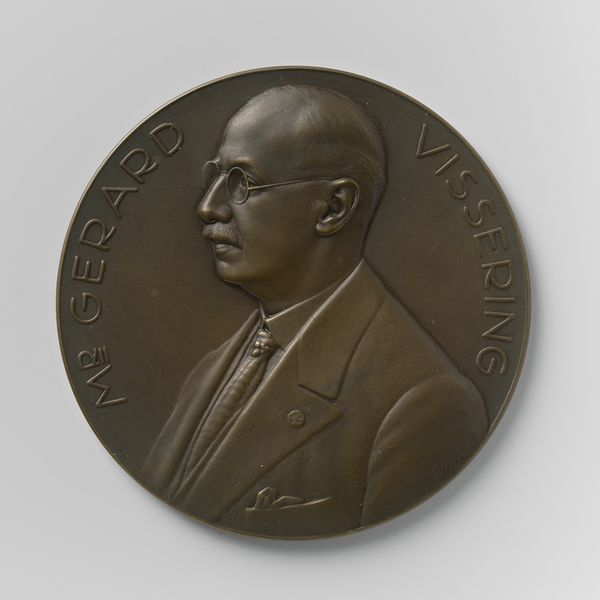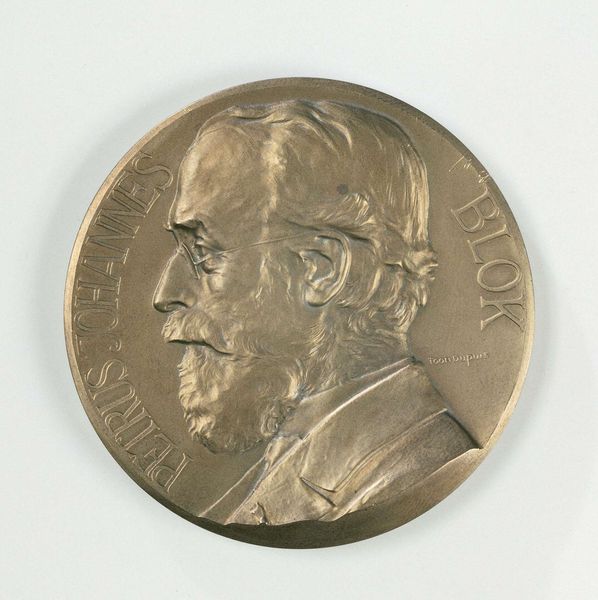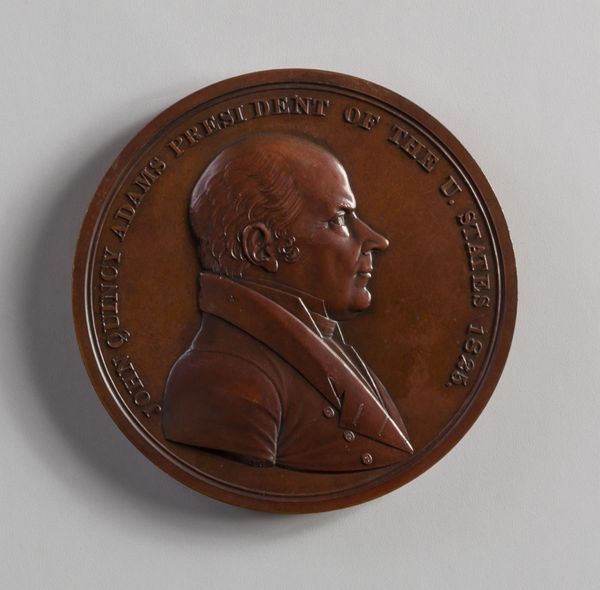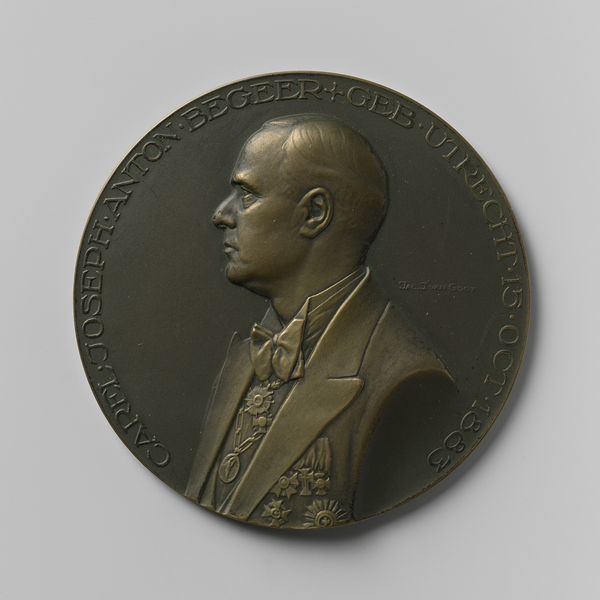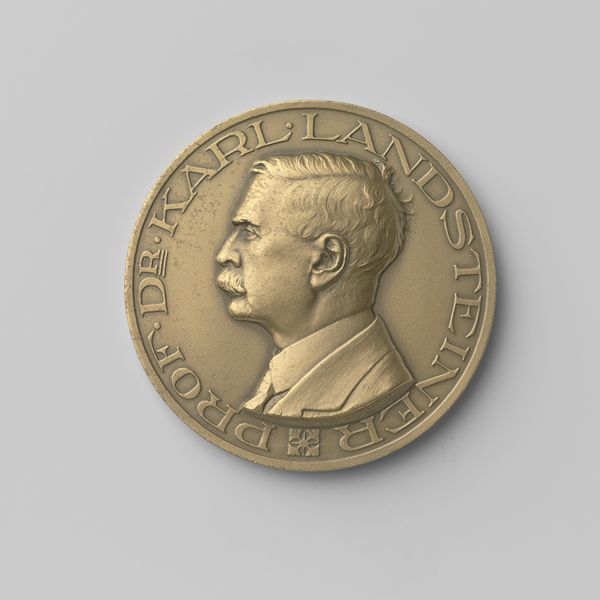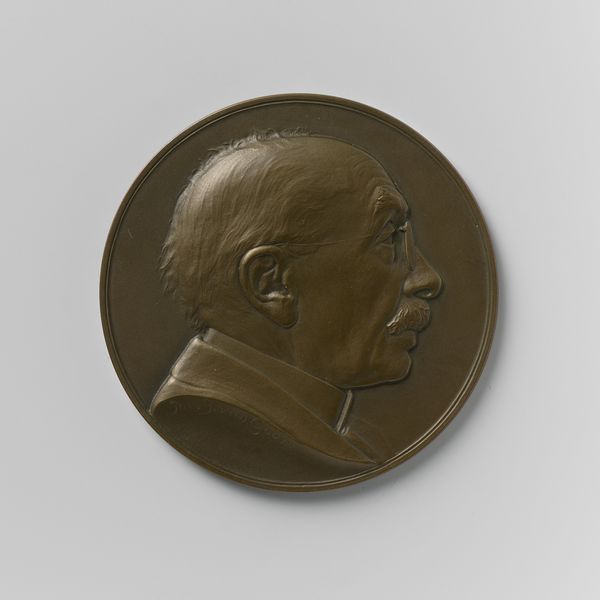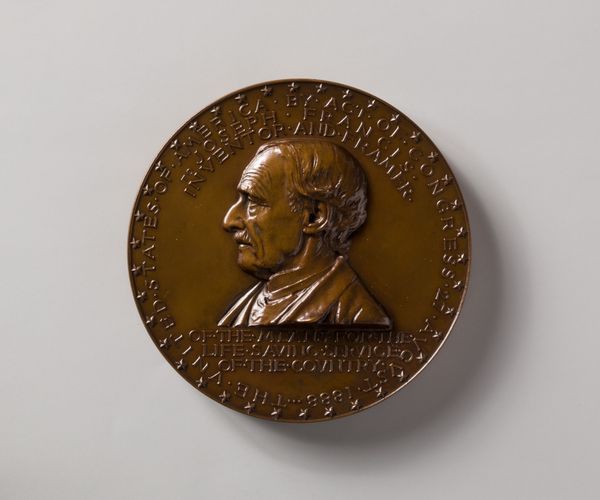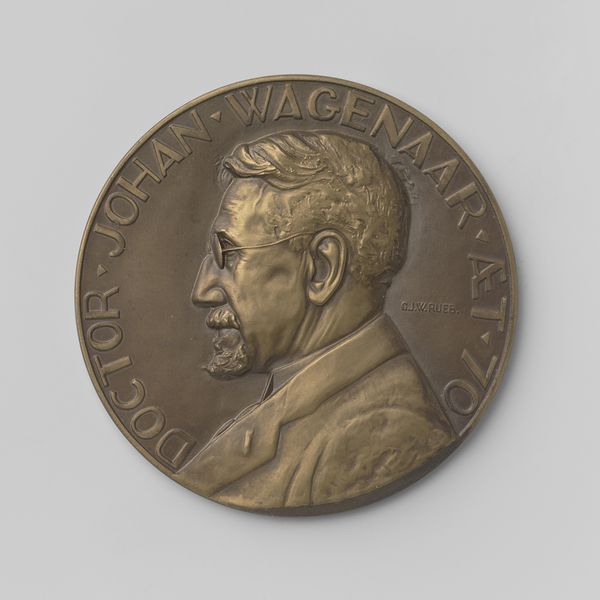
relief, bronze, sculpture
#
portrait
#
relief
#
bronze
#
figuration
#
sculpture
#
modernism
#
realism
Dimensions: diameter 6 cm, weight 102.93 gr
Copyright: Rijks Museum: Open Domain
Curator: Here we have a bronze relief, "Overlijden van Dr. Willem Drees," or "The Death of Dr. Willem Drees," created in 1988. The piece currently resides in the collection of the Rijksmuseum. Editor: My initial reaction is somber respect. The texture of the bronze seems to age the subject even further. It possesses a rather stark quality for commemorative portraiture. Curator: Indeed, the texture is striking. Observe how the artist uses varied depths and intricate lines to define Dr. Drees's features. There’s a strong interplay of light and shadow that gives the portrait considerable dimensionality despite being a relief. The circular composition traps you within its contours and guides your eyes along its edges. Editor: I’m struck by how this rendering potentially romanticizes Dr. Drees' legacy, as the former Prime Minister. Though considered modest in life, here, the lines etched around the eyes seem less about aging and more like records of steadfast dedication, an unyielding public servant—but perhaps that's overly generous of this depiction. I question to what extent realism is at play versus memorializing a social narrative around an esteemed political figure? Curator: An intriguing point. Focusing solely on its form, there is the classical influence evident in the clean lines and dignified pose, juxtaposed with elements of realism—see the detail in the skin, the lines in his forehead. This melding of styles contributes to the artwork’s sense of gravity and enduring quality. Semiotically, the gaze itself commands respect and hints at a figure deeply thoughtful and contemplative, drawing on both modern and archaic concepts to establish the sitter’s presence. Editor: Right, the gaze and circular form give me pause. Was it chosen to denote unity, wholeness, a never-ending cycle of legacy—as many official memorial images intend? Given Drees's social democratic inclinations, what political statement does its style and commemorative context try to impart about post-war Dutch politics? Curator: Well, looking at this relief from a formal perspective reveals how it uses texture and composition to establish an emotional connection. I read his gaze differently—perhaps weary. Either way, it showcases masterful sculptural construction and understanding of materiality. Editor: And I appreciate that this piece enables a conversation of political memory, as it can solidify or undermine social constructs based on an official portrayal. Food for thought about politics, aesthetics, and posterity.
Comments
No comments
Be the first to comment and join the conversation on the ultimate creative platform.


